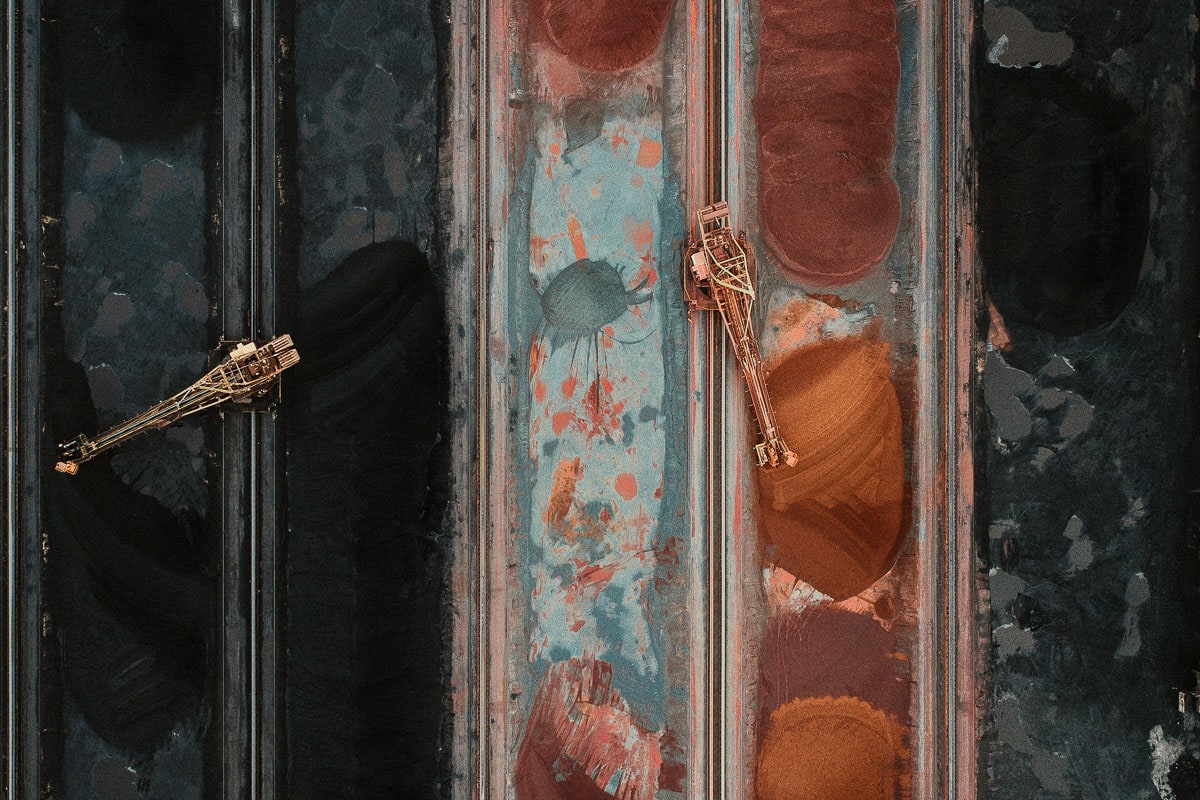
Tom Hegen makes the kinds of photos you can look at for ages and continually discover something new. A raptor flying above a technicolour lake; the vertical chasm of an open-pit marble mine; oyster farms in the French Atlantic like barcodes etched into the sea.
At first glance, the images could be mistaken for expressionist paintings, but their beauty merely acts as a hook, reeling us in before the gut punch of a stark, unsettling truth about the destructive impact of human activity upon the planet.
Here, he gives us the latest edition in our series Far-Flung.

Tom’s route into photography began while studying communication design, as he quickly realised the medium’s potential to express stories and art. Starting out shooting classic landscape photography, which often entailed chasing the perfect light and capturing sweeping vistas, Tom soon felt that these sugarcoated shots were not representative of the real environment.
“I began to question the term ‘landscape’ as known from ‘landscape photography’,” says Tom. “‘Land’ is a word of Germanic origin, and the roots of the suffix ‘scape’ (German: ‘schaffen’) refer to the verb ‘shaping’. So landscape in the sense of landscaping refers to an activity that modifies the visual features of an area.
ArrayArray“With this background, I began to read the landscape that surrounded me in a new way. Consequently, I started seeing landscape photography as a way to document places influenced by humans rather than [it] showing pure, unspoiled nature.”
After this realisation, Tom took a new trajectory with his photography while maintaining the principles of communication design. Through fine art aerial photography, Tom photographs areas around the globe where we extract, refine and consume natural resources. By doing so, he sheds a light on these hidden places that we all undoubtedly rely on.
ArrayArray“We all use electric energy that is brought to us through copper wires,” says Tom of his Copper Mine Series. “We all use devices that run on those metals, and we live in buildings that are heated by the use of copper wires… [These are] places we know exist but hardly know what they may look like.”
As his projects are research-driven, Tom says a large amount of preparation is needed to get a project on track. “I am always planning my projects well before the actual production. It’s about finding the right locations for the subject. I need to find pilots that can take me there and I need to check for the right season, weather and light. I basically work with a four-step method of research, concept, execution and evaluation.”
ArrayArrayGetting a photography permit is a factor he has to take into account before any shoot, but Tom says it really depends on the project and location he wants to photograph. For some projects – such as his latest book AIRPORTS – he had to obtain permission from the six largest airports in Germany and was in close contact with the national air traffic control.
The techniques Tom uses to create his work vary from small airplanes to helicopters, to photographing from hot air balloons. (He’s even photographed projects from the top of a bridge.) But the tools are irrelevant in the grand scheme, he says. “For me, it doesn’t make a big difference shooting from an aeroplane, helicopter or working with a drone. I focus on the single image, the series and the concept rather than the technique.”
ArrayThe beauty of the overview perspective is an obvious appeal of aerial photography, as Tom is able to capture the familiar from a fresh vantage point, whether it’s the galactic swirl of an extinct volcano in the Icelandic Highlands or the burnt orange tones of toxic water in his native Germany. “You can say that my work is a seduction, showing human traces with beauty, eye-pleasuring symmetry and colour,” he says. “In general, people are more attacked by looking at something beautiful than by something disturbing.”
Tom’s photographs of ash ponds, for example, show tyre tracks as intricate as the Nazca Lines carved into the earth’s surface and golden tributaries forming shapes of octopi, veins and tree roots that we wouldn’t see from ground level. Reading Tom’s accompanying text, we learn that these are in fact the vast depositories of waste from coal burning as they are pumped through pipelines into huge ponds.
ArrayWhile the ponds reduce the amount of airborne pollutants, the ash is mixed with toxic chemicals and poses serious health risks for the surrounding environment. They are beautiful, yes, but what we are seeing are the physical scars of human activity on the planet – and this is what Tom wants to direct our attention towards.
“It’s undeniable that we have become the most powerful species on our planet with significant effects to our environment,” says Tom. “I’m constantly learning something new about our planet through my work. And I think I understood very soon that we are living on a very fragile sphere that needs to be protected, especially if future generations want to inhabit it as well.”
ArrayArrayToday these images have a stronger urgency than ever and there is a greater imperative to cut through the visual noise. Ultimately, Tom hopes that through his work he can contribute to a shift towards more sustainable systems and ways of living.
“With my aerial photo projects, I aim to [draw] viewer’s attention to issues they probably wouldn’t pay attention to,” he says. “In my eyes, the overview perspective has the great potential to provide insights into the relationships between humans and nature. The landscapes I photograph are consequences of our collective consumption. Therefore, we all have a connection to these places. I believe that aerial photography has the ability to deliver a bigger picture and give people the opportunity to better understand the world we live in.”
www.tomhegen.com / @tomhegen.de




